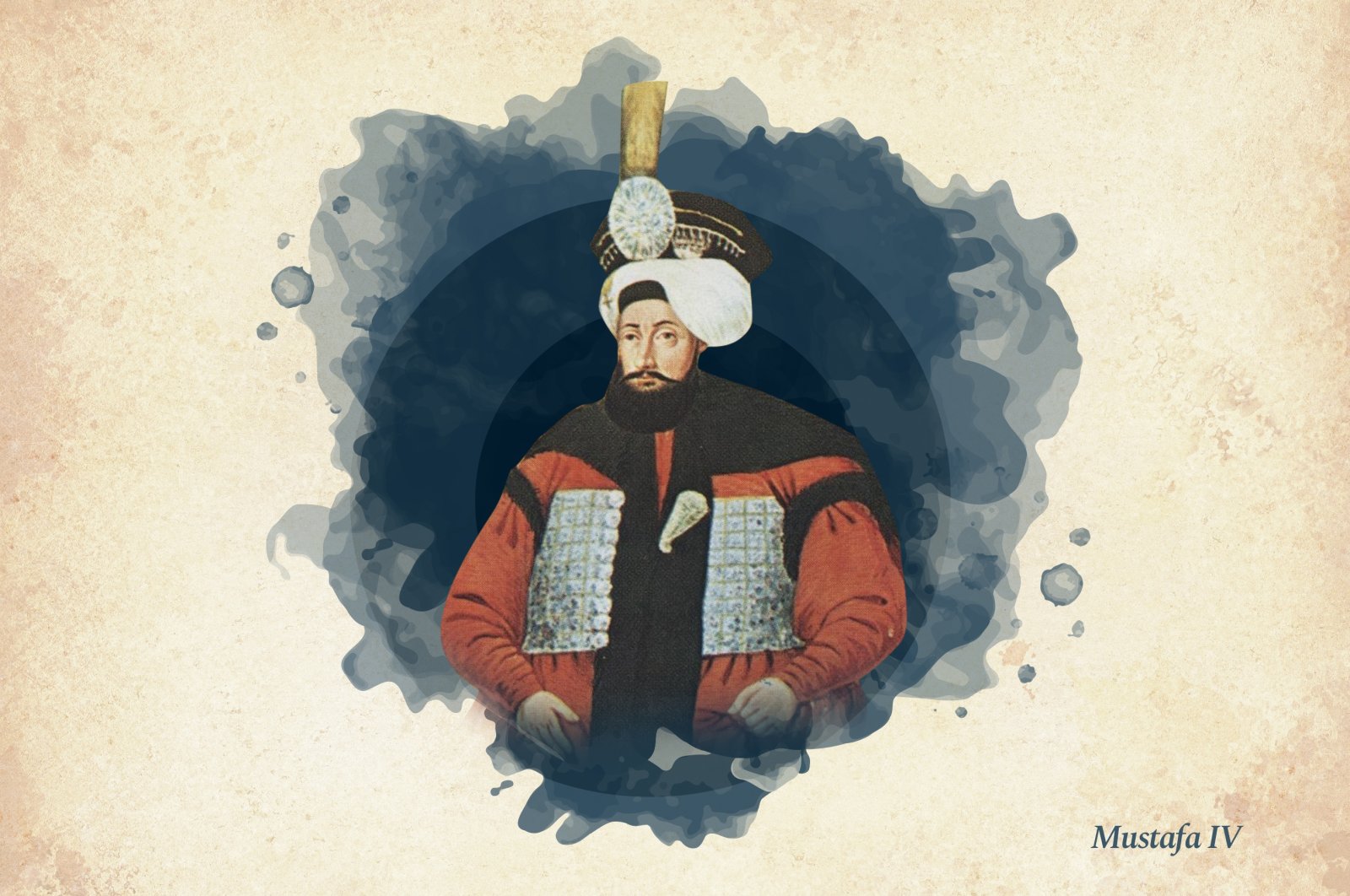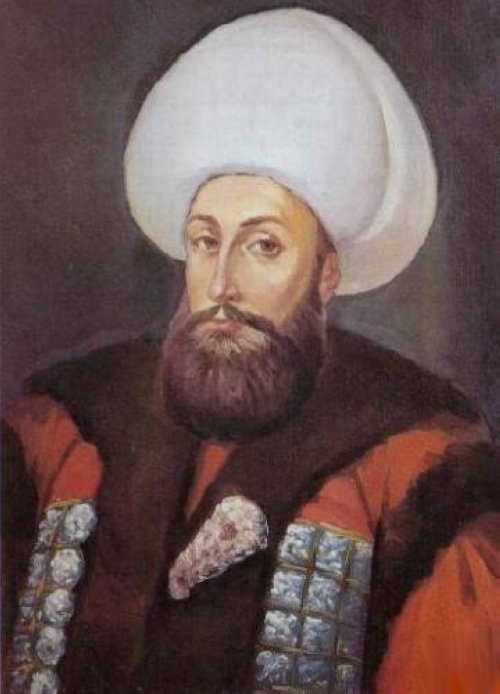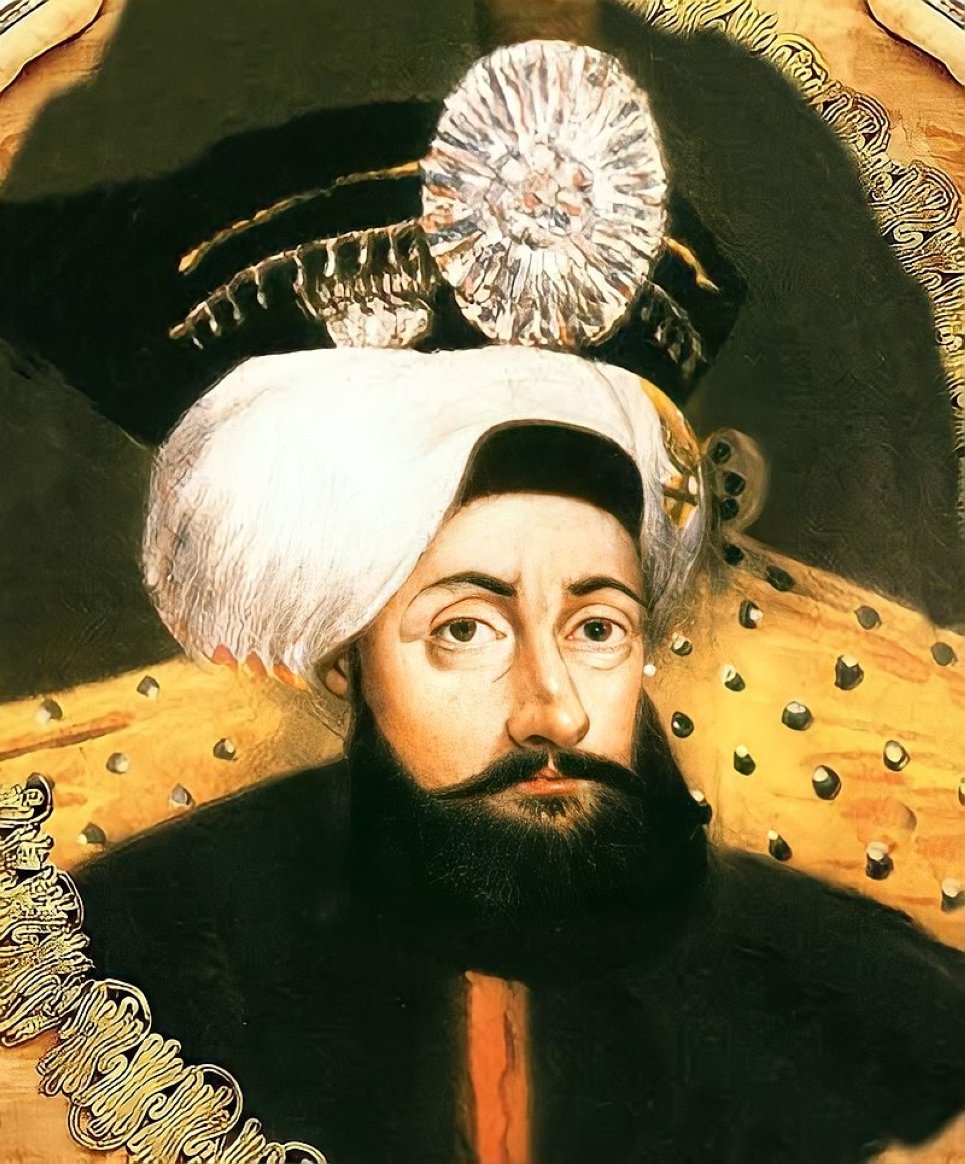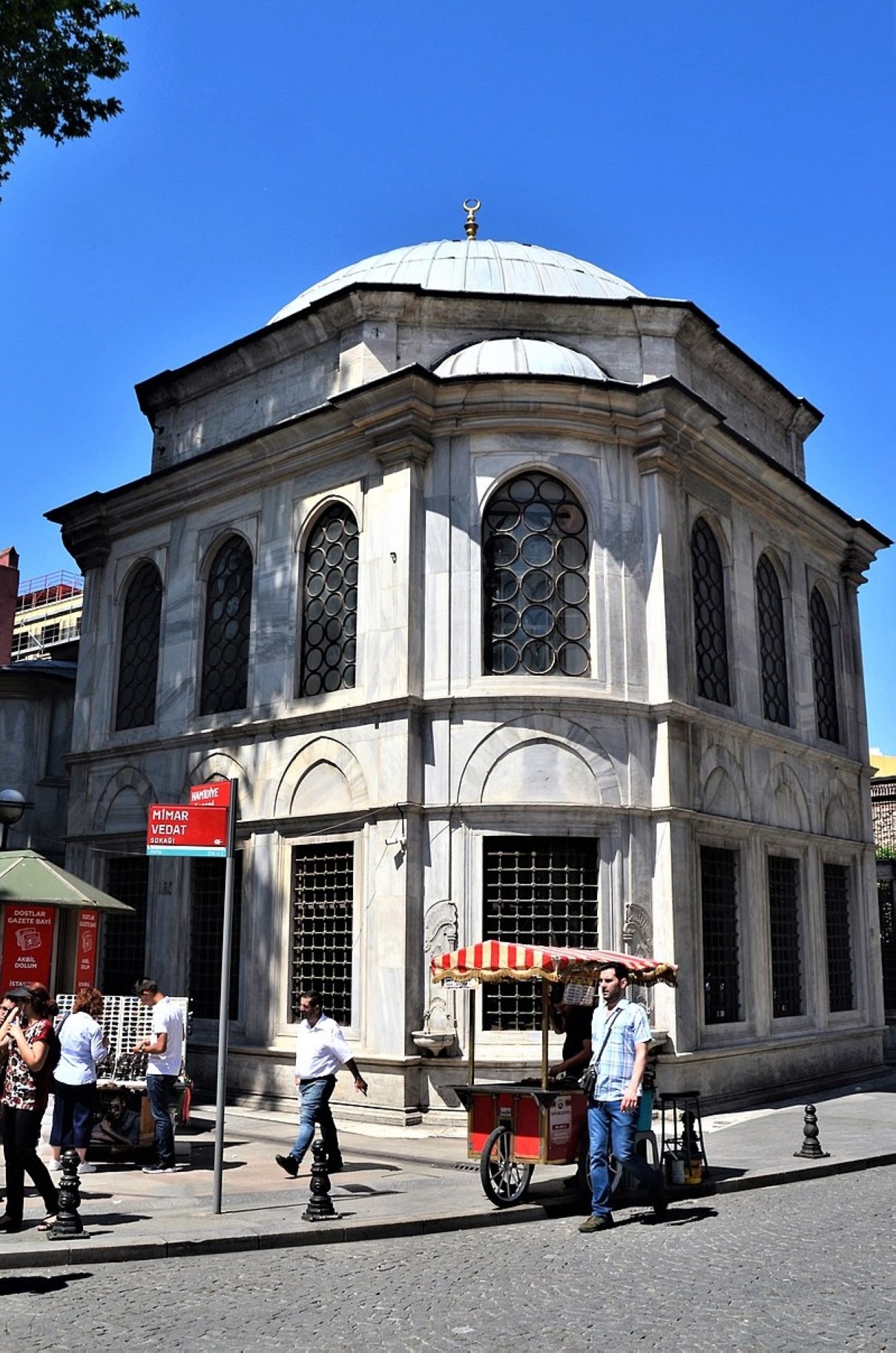
MIGHTY SOVEREIGNS of OTTOMAN THRONE: SULTAN MUSTAFA IV
Sultan Mustafa IV was the 29th Ottoman sultan and the 94th Islamic caliph. He was the son of Sultan Abdülhamid I. He was born on Sept. 8, 1779, to Ayşe Sineperver Kadınefendi. He lost his father at the age of 10. Sultan Selim III raised his uncle’s two sons as if they were his own children with utmost care and compassion. In the meantime, a section of people who were not satisfied with the actions of Sultan Selim thought to enthrone Sultan Mustafa.
On May 29, 1807, he was enthroned after Sultan Selim III was dethroned as a result of a coup. Sultan Selim said to him, "My brother, Allah has placed you on the throne that I was made to descend according to his will. While trying to bring the nation to the place it deserves, I suffered the anger of the people. My good intentions were the reason. I hope you will rule more happily than me."
On May 31, an incident that is unprecedented in Ottoman history took place. The coup plotters issued a "hüccet-i şer'iyye" (court decision) stating that the sultan would not hold them responsible for the coup. They made Sultan Mustafa IV take an oath and had it signed. Since the new rulers had punished the putschists one by one in all incidences of previous coups, this time the coup orchestrators wanted to save themselves.
Russian dreams reaching Istanbul
Meanwhile, the war with the Russians continued. The rebellion in Istanbul broke the discipline of the army on the Russian front. Sultan Selim III's supporters in the army took refuge with the ayan (the class of local notables in the Ottoman Empire) of Ruse, Alemdar Mustafa Pasha. Upon these events, Grand Vizier Hilmi Pasha was dismissed, and Çelebi Mustafa Pasha became the new grand vizier. After the coup plotters started wreaking havoc in the army, Alemdar Mustafa Pasha went to Silistra, where the army was located, with a force of 5,000 people, and restored the order of the army.
On June 17, the Emperor of France Napoleon I and the Russian Tsar Alexander I met in Tilsit. France promised not to ally with the Ottomans against Russia. The Russians would invade Poland but they would withdraw from Wallachia and Moldavia. The two states also discussed some projects regarding the future partition of the Ottoman Empire. Accordingly, Wallachia, Moldavia and Bulgaria would be given to Russia; Albania, the Peloponnese and Crete to France; Bosnia and Serbia to Austria. The fact that Russia's dreams reached Istanbul made France hesitant.
Taking advantage of the political uncertainty, the Russians captured some castles, but when they were put in an awkward position against the French, whom they were at war with, they signed an eight-month armistice with the Ottoman Empire on Aug. 20, 1807. Accordingly, Russia would evacuate Wallachia, Moldavia and other captured territories within 35 days; but Ottoman armies would not enter these lands until an agreement was signed.
Meanwhile, with a fait accompli, France occupied Dubrovnik and the Ionian Islands, which were Ottoman territory. The Ottoman government put up with this in order to prevent the two foreign states from getting closer to each other and to not make an enemy of France.

Secret political club
Despite Sultan Mustafa IV’s opposite desires, the modernist-traditionalist dichotomy among the bureaucrats was getting sharper. The cautious sultan, who was a supporter of innovation and modernism like his predecessors, was trying to create a relatively peaceful environment by giving duties to statesmen from both groups.
Meanwhile, the putschists in Istanbul were increasing their pressure day by day. The janissaries started interfering in everything even though they had promised not to. Following the events carefully, Sultan Mustafa IV tried to drive some of the putschists away from the palace with various excuses and duties. He began to look for ways to eliminate the rebels completely. His reign, however, was only a symbolic one as the real political power was in the hands of the putschists. This situation had occurred several times in Ottoman history.
In the meantime, a secret political club called Rusçuk Yaranı (Ruse Companions), which included bureaucrats and intellectual elites, was formed. The club seemed to be devoted to reform; and was aiming to put Sultan Selim III back on the throne. This committee, including the notables in Eastern Rumelia, went to Alemdar Mustafa Pasha and encouraged him to take up the position of the grand vizier.
Alemdar Mustafa Pasha, the son of an ordinary janissary, was well-known and was loved for his courage and generosity. He had become the ayan of Ruse after gaining wealth through animal trading. While the ayan had been a democratic administrative position that mediated between the state and the people, it turned into a kind of feudal lordship in the 18th century.
The fact that Rusçuk Yaranı was not sincere in its views on reform, its real intentions being a struggle for power, and that they had opposed Sultan Selim III in the event called the Second Edirne Incident, is well-known. It is understood that they manipulated Alemdar Mustafa Pasha.
End of the rebels
Alemdar Mustafa Pasha, in order to complete this gentle task, tried to gain the trust of Sultan Mustafa IV and the grand vizier. For this purpose, he sent Refik Efendi from the Rusçuk Yaranı to Istanbul and Behiç Efendi to Edirne to the grand vizier. Their duty was to make them believe that Alemdar had no other intention than to punish the putschist Kabakçı Mustafa.
Behiç Efendi successfully fulfilled this duty. Refik Efendi suggested to the sultan that the events would come to an end with the arrival of Alemdar Mustafa Pasha – who was loyal to Sultan Mustafa IV – to Istanbul. However, the sultan, who was suspicious of the pasha, rejected this offer, saying that things seemed to have settled for now and it was necessary to wait.
Meanwhile, the rebels were attempting to convince Sultan Mustafa that Sultan Selim and Şehzade Mahmud needed to be killed in order to secure his throne; but the sultan did not accept it. Civil and military bureaucrats were also against it. Upon this, Behiç Efendi came to Istanbul and suggested to the sultan that Alemdar Mustafa Pasha should come to Istanbul. Thinking of purging the rebels, the sultan accepted the offer this time. Alemdar Mustafa Pasha was summoned to Istanbul.
This time, the Rusçuk Yaranı convinced the pasha to go to Istanbul with the army and work to ensure public order there. Sultan Mustafa did not want the army to march to Istanbul, but could not prevent it.
Alemdar Mustafa Pasha, with his 15,000 soldiers, accompanied the grand vizier who left Edirne. Before the army entered Istanbul, the ayan of Pınarhisar, Hacı Ali Ağa, killed Kabakçı Mustafa, who was working as the Bosporus guard, on his wedding night, and sent his head to the grand vizier by the order of Alemdar. Pasha’s men, who had come to Istanbul before, had begun to hold key points.

Too little too late
The murder of Kabakçı caused great anxiety among the courtiers and the janissaries. Sultan Mustafa IV, on July 19, 1808, met the army returning from the expedition with the state dignitaries at the entrance of Istanbul between Incirli and Davutpaşa. The grand vizier and Alemdar Mustafa Pasha presented their respect to the sultan as per the protocol. His mentor Ramiz advised the pasha to detain the sultan. However, he refused, considering it unchivalrous. Contemporary historians characterize this as Alemdar Mustafa Pasha’s mistake. However, at that time, the sultan had an exceptional place in the consideration and conscience of the Ottomans.
On the same day, Alemdar Mustafa Pasha entered Istanbul. The rebels, ridden with fear, sought an opportunity to escape. In a short time, the waters calmed in Istanbul. The tyrants began to be eliminated, the conspirators were driven out. Cevdet Pasha described those days by saying that: "The streets were filled with armed Rumelian soldiers. While they were walking around in their own clothes, fear gripped the people. If a cannon was fired in Tophane, it would fall on deaf ears."
Alemdar Mustafa Pasha set up headquarters in the Çırpıcı meadow just outside the city. He had Sheikh al-Islam Ataullah Efendi dismissed, who had given a fatwa on the dethronement of Sultan Selim. However, Sultan Mustafa refused the dismissal of the captain of the sea. Grand Vizier Çelebi Mustafa Pasha was pleased with the work of Alemdar Mustafa Pasha but was uneasy about his increasing influence, so he asked him to go back. However, he refused the offer, saying that the state was not completely rid of the bullies.
The grand vizier became suspicious of this. He told the sultan's relatives that Alemdar Mustafa Pasha's intention was to put Sultan Selim on the throne again. "It is becoming too little too late (to do something). Tell the sultan to grant me permission. Let me have Refik and his friends executed. Alemdar and his men will stay outside. We will close the doors and finish him off with the soldiers," he said. However, the palace bureaucrats, deceived by Refik, refused. They said that Alemdar Mustafa Pasha had no other purpose than to serve Sultan Mustafa and that there was no need to make mischief.
End of fortune
Hearing this, Alemdar Mustafa Pasha raided the Sublime Porte – the grand vizier office – with his 5,000 men on July 28. He took away the seal of the grand vizier. With Sheikh al-Islam Arapzade Arif Efendi beside him, he went to the palace to put Sultan Selim III on the throne again. He stopped at the Middle Gate and called the kızlar agha (the head of the eunuchs who guarded the imperial harem). "The ayans want Sultan Selim to ascend the throne. Go, get him out," he instructed. He sent the sheik al-Islam to the sultan to explain the situation.
Meanwhile, the rebels told Sultan Mustafa that if Sultan Selim III and the heir apparent, Şehzade Mahmud, were executed, he would remain on the throne, and offered to have these two executed. The sultan refused at first but was later convinced by them. Meanwhile, Alemdar Mustafa Pasha began to push the palace door with the use of force.
The bullies killed Sultan Selim III, who was imprisoned in the harem. Şehzade Mahmud escaped and survived. At that moment, Alemdar Mustafa Pasha, who went to the palace, encountered the lifeless body of Sultan Selim. He proclaimed Şehzade Mahmud as sultan.
Meanwhile, Sultan Mustafa was in the Baghdad Kiosk in Topkapı Palace. Using harsh words he declined to accept being dethroned to Alemdar Mustafa Pasha, who came to him. The pasha warned those who were with the sultan to take him to a suitable place, otherwise, he would cause an unwanted incident. The imam of the palace, Ahmed Efendi, calmed the sultan by saying: "It seems that your fortune on the throne was this much. Please, do rest in the harem."
On the night of Nov. 14 and 15, some soldiers revolted. They raided the Sublime Porte to kill Alemdar Mustafa Pasha while attempting to put Sultan Mustafa back on the throne. Thereupon, in accordance with the fatwa signed by the sheikh al-Islam and the sultan's reluctant edict, Sultan Mustafa IV was executed on the night of Nov. 15 or 16, 1808. He was 29 years old. His reign period was one year and two months. He was buried in his father's tomb in Eminönü. His only daughter died when she was 8 months old. Rumors arose among the rebels that the coffin was empty and he was intended to be shown dead to appease the soldiers.

Wrong image
Due to the role he is thought to have played in history, Sultan Mustafa IV is described by contemporary historians as a person of low intelligence, ignorant, naive but ambitious. However, this is not true; he never had complete authority because of the political turmoil of his period.
Even when he was a şehzade (prince), in the famous report presented to him by a senior military bureaucrat known as Koca Sekbanbaşı, the Nizam-ı Cedid Army – the recently established professional army – was praised as trained soldiers and its necessity was explained. If Alemdar Mustafa Pasha had not attempted the coup, he would have been asked to carry out reform and reconstruction work by Sultan Mustafa IV. The fact that Sultan Mustafa did not dissolve the reformers but, on the contrary, employed them in official services; took measures for the safety of the city and thought of placing trained soldiers in the Artillery Barracks in Taksim; and paid close attention to the Mühendislikhane – the Imperial School of Military Engineering (today's Istanbul Technical University) – are all proof to this.
The idea of reviving the Nizam-ı Cedid (the new system inaugurated a series of reforms carried out by the former Sultan Selim III) was not abandoned; Sultan Mustafa IV supported this under the table. Süleyman Agha, who previously taught the trained soldiers in Levend Çiftliği, was assigned to work in this field.
Sultan Mustafa tried to improve the situation of the people who were aggrieved due to the expenditure on Nizam-ı Cedid. However, the ayans used this situation to strengthen their personal interests and authority. For this reason, while they were against Sultan Selim before, this time they were against Sultan Mustafa. They acted ostensibly to rectify the rebels, but in fact, they were doing so to seize political power. Sultan Selim and Sultan Mustafa took the full brunt.
Önceki Yazılar
-
IF TIME DOES NOT ADJUST TO YOU, THEN YOU ADJUST TO TIME!16.07.2025
-
THE OTTOMAN DYNASTY AND QURAYSH9.07.2025
-
"WOE TO THE ENEMIES OF THE REVOLUTION!" What Was The People’s Reaction To The Kemalist Revolutions?2.07.2025
-
DEATH IS CERTAIN, INHERITANCE IS LAWFUL!25.06.2025
-
THE SECRET OF THE OTTOMAN COAT OF ARMS18.06.2025
-
OMAR KHAYYAM: A POET OF WINE OR THE PRIDE OF SCIENCE?11.06.2025
-
CRYPTO JEWS IN TURKEY4.06.2025
-
A FALSE MESSIAH IN ANATOLIA28.05.2025
-
WAS SHAH ISMAIL A TURK?21.05.2025
-
THE COMMON PASSWORD OF MUSLIMS14.05.2025